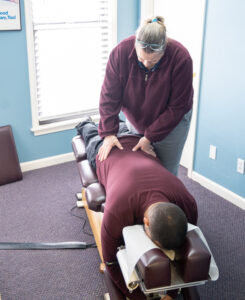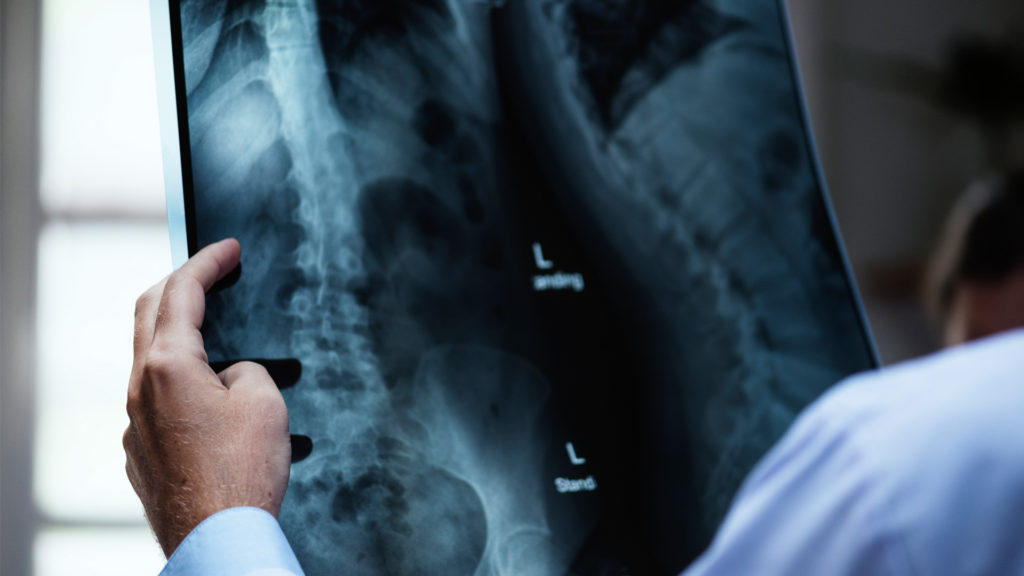
Chiropractic Adjustment for Pain Relief | North Atlanta Chiropractic Center Treatment
Se Habla Español
AS SEEN ON:




Are you suffering from back pain, neck pain, or mobility issues? North Atlanta Chiropractic Center offers expert chiropractic treatment in Duluth that can transform your quality of life. Our specialized chiropractic adjustments address the root cause of your pain rather than merely masking symptoms, providing long-lasting relief and improved overall health without reliance on pain medicine.
Benefits of Our Chiropractic Adjustment Treatment for Your Health
North Atlanta Chiropractic Center provides exceptional chiropractic care with over 20 years of experience serving the Duluth community. Our approach to chiropractic treatment is personalized and backed by extensive training in multiple chiropractic methods. Unlike conventional medical treatments that often rely on pain medicine and invasive procedures, our chiropractic care focuses on natural healing through precise spine adjustments and chiropractic alignment techniques. This form of therapy offers many benefits.
What sets us apart is our commitment to addressing the slight misalignment of the vertebrae, a condition that can be the source of many health problems. Our chiropractic practice combines traditional adjustment methods with modern techniques to deliver optimal results for each patient. Whether you’re seeking relief from chronic pain or looking to improve your overall health, our chiropractic healing approach and treatment plan address your unique needs. Our chiropractor will find the best treatment for you.

Expert Spinal Manipulation for Pain Relief Post-Injury
North Atlanta Chiropractic Center provides revolutionary spine adjustment techniques that are an effective treatment for injuries without relying on pain medicine. Our chiropractic adjustment methods are specifically designed to address the root causes of pain and discomfort following accidents, falls, or sports injuries. By targeting the affected vertebrae, our expert chiropractors restore proper alignment and function to your spine.
Many patients come to us frustrated after trying various treatments that only mask symptoms rather than address the underlying issues and conditions. Our chiropractic treatment offers a drug-free alternative that promotes natural healing. Our specialized techniques gently realign the spine, reducing pressure on nerves and allowing your body to heal itself without dependency on pharmaceuticals. This is a key benefit of our therapy.
Research consistently shows that people who visit a chiropractor or doctor of chiropractic following an injury experience faster recovery times and more complete healing than those who rely solely on pain medicine. The skilled practitioners at North Atlanta Chiropractic Center are experts in identifying exactly where spine misalignments are causing pain and addressing these conditions with precise adjustments as part of a comprehensive treatment plan.
Sport Chiropractor Care for Athlete Injury Conditions
North Atlanta Chiropractic Center provides specialized chiropractic treatment designed specifically for athletes at all levels. Our sport chiropractor team understands the unique demands placed on your body during training and competition. Through targeted chiropractic care techniques, we help optimize performance, prevent injuries, and accelerate recovery times. This treatment has many benefits for an athlete’s health.
Athletes frequently experience pain in the joints of the spine, shoulders, knees, and ankles due to repetitive movements and high-impact activities. Our chiropractic treatment methods address these issues by ensuring proper alignment and mobility in these joints and throughout the musculoskeletal system. By correcting the slight misalignment of the vertebrae, we help prevent many sports-related injuries and conditions before they occur.
Our approach includes:
- Sport-specific chiropractic adjustment protocols and treatment plans
- Performance-enhancing alignment techniques
- Injury prevention strategies
- Rapid rehabilitation after sports injuries
- Customized training recommendations
Professional and amateur athletes alike benefit from our specialized knowledge of athletic biomechanics. We understand how proper spine alignment contributes to optimal nerve function, muscle recruitment, and overall athletic performance. Many patients report improved flexibility, strength, and coordination following regular chiropractic care at our center.
“As a competitive runner, I was constantly dealing with hip and knee pain. The sport-specific chiropractic adjustments at North Atlanta Chiropractic Center have not only eliminated my pain but helped me shave minutes off my race times!” – Michael T., collegiate athlete.
Personalized Corrective Exercises for Long-Term Recovery and Spine Health
North Atlanta Chiropractic Center provides corrective exercise programs that complement our chiropractic treatment techniques for maximum long-term benefits. While a chiropractic adjustment effectively realigns your spine, personalized exercises ensure that these improvements last by strengthening supporting muscles and improving flexibility.
Our chiropractors carefully assess the specific condition of our patients, identifying weaknesses and imbalances that may be contributing to their pain or limiting recovery. Based on this assessment, our doctor will develop a tailored exercise routine as part of the treatment plan that addresses your unique needs. These corrective exercises focus on:
- Strengthening core muscles that support proper spinal alignment
- Improving flexibility in areas with restricted movement
- Enhancing posture to prevent the recurrence of pain
- Building stability around previously injured joints
- Increasing overall functional mobility
Many patients find that the combination of chiropractic treatment and corrective exercises provides more complete and lasting relief than adjustments alone. This integrated therapy approach addresses not just the symptoms but the underlying causes of discomfort and pain, helping to prevent future health issues.
Our chiropractors provide clear demonstrations of each exercise and carefully monitor your progress, adjusting your treatment program as needed to ensure optimal results. This personalized approach to corrective exercise is a cornerstone of our chiropractic practice and a key factor in our patients’ long-term health and success.
Preventative Postural Screening to Maintain Spinal Health and Prevent Future Conditions
North Atlanta Chiropractic Center provides essential preventative postural screening that identifies potential spine-related issues before they develop into painful conditions. Our screening process examines your posture, spine alignment, and movement patterns to detect slight misalignment of the vertebrae that could lead to future health problems.
Many people are unaware that poor posture and minor spine misalignments are the root of many health problems. Our advanced postural screening techniques allow us to identify these issues early, when they’re easiest to correct through chiropractic treatment and other chiropractic methods.
During your postural screening, our experienced chiropractors will:
- Evaluate your standing and seated posture
- Assess spine curvature and alignment
- Analyze your gait and movement patterns
- Identify areas of tension or restriction
- Check for signs of spinal imbalance
Based on these findings, we develop a personalized chiropractic treatment plan that may include specific adjustment techniques, corrective exercises, and lifestyle recommendations to improve your posture and overall health.
“I had no idea my chronic headaches were related to my posture until my screening at North Atlanta Chiropractic Center. The adjustments and posture correction exercises have eliminated my headaches completely!” – Robert L., Duluth resident
Regular postural screenings are particularly important for:
- Office workers who sit for extended periods
- Students carrying heavy backpacks
- People who use digital devices frequently
- Those with physically demanding jobs
- Anyone with a history of back or neck pain
Specialized Prenatal and Postnatal Chiropractic Adjustment Care
North Atlanta Chiropractic Center provides gentle, effective chiropractic care specifically designed for women during and after pregnancy. Our specialized prenatal and postnatal chiropractic treatment addresses the unique challenges that pregnancy and childbirth present to the female body, offering safe relief from pain and discomfort without medicine.
During pregnancy, a woman’s body undergoes dramatic changes that can lead to significant pain and discomfort, affecting her overall health. The growing baby shifts the center of gravity, placing unusual stress on the spine, pelvis, and other joints. Hormonal changes cause ligaments to relax, potentially leading to instability and pain.
Our prenatal chiropractic treatment techniques are specifically modified to accommodate these changes while providing relief from common pregnancy discomforts, including lower back pain, sciatica, pelvic discomfort, round ligament pain, and neck and upper back tension. These gentle adjustments help maintain proper alignment of the joints as your body changes throughout pregnancy.
After childbirth, the body faces another set of challenges as it returns to its pre-pregnancy state. Postnatal chiropractic care is a treatment that helps our patients address several important recovery aspects, such as realignment of the pelvis, recovery from the physical stress of delivery, relief from nursing-related neck pain and shoulder pain, support during the healing of the abdominal muscles, and assistance with regaining proper posture.
Our chiropractors have advanced training in the Webster Technique and other pregnancy-specific chiropractic methods that ensure the safety and comfort of both mother and baby. Each doctor on our team is highly skilled. These gentle chiropractic procedures provide significant relief and are a safe treatment without the risks associated with pain medicine during pregnancy and breastfeeding.

Experience Pain-Free Movement and Relief After Just One Visit
North Atlanta Chiropractic Center provides immediate relief through expert adjustment techniques that often produce noticeable improvements after a single treatment session. Many patients who arrive in pain leave their first appointment experiencing significantly reduced discomfort and improved mobility, which is one of the key benefits of this therapy.
Answering Your Questions About Chiropractic Adjustments
We understand that trying a new healthcare treatment can bring up questions. It’s completely normal to want to know more about the process, what to expect, and why chiropractic care is so effective. Our research into what potential patients are asking online shows a few key areas of concern. Below, we address these common questions about this medical therapy with the clarity and expertise you can expect from our team.
What is the “popping” or “cracking” sound during an adjustment treatment?
This is one of the most frequent questions we hear. The sound is not your bones cracking or grinding together. Instead, it’s the result of a process called cavitation. The joints in your spine contain fluid (synovial fluid) that has dissolved gases like oxygen, nitrogen, and carbon dioxide. When a chiropractor applies a gentle, specific force to the joint, the pressure changes, and these gases are released, forming a small bubble that makes a “pop” sound. It’s very similar to the sound you hear when opening a can of soda or a jar of jam. It’s a completely safe and natural occurrence for your health, and it is not an indicator of whether the adjustment was successful. Some techniques produce this sound, while others do not, but both types of treatment are equally effective.
Is this type of adjustment a safe treatment for pain?
Yes. A chiropractic adjustment is widely recognized as one of the safest, non-invasive, and drug-free therapies available for the treatment of neuromusculoskeletal complaints and other conditions. A Doctor of Chiropractic undergoes years of rigorous education and training, including a thorough study of anatomy and physiology. Before any treatment is performed, our doctor conducts a comprehensive consultation and examination to determine if you are a candidate for chiropractic care. The risks associated with chiropractic are very small, especially when compared to other treatments for similar conditions, such as prescription pain medicine or surgery.
Will the adjustment treatment hurt?
For the vast majority of patients, chiropractic adjustments are not painful. In fact, many people experience immediate relief from pain and a sense of relaxation afterward. The force applied is gentle, controlled, and specific to the joint being treated. If you are visiting us with a condition that is already causing significant pain, you may experience some minor and temporary discomfort during the adjustment treatment. Some patients report feeling a mild soreness, similar to the feeling after a new workout, for 24 hours after their first session as their body adapts to the therapy. Our chiropractors are experts at making the process as comfortable as possible and will adjust their technique to suit your specific needs and comfort level.
How many adjustments and visits will I need to feel better?
The number of treatment sessions required varies from person to person. There is no one-size-fits-all answer, as your treatment plan will be tailored specifically to you. Several factors influence the length of your treatment plan, including:
- The severity and type of your condition
- How long you have had the issue
- Your overall health and lifestyle
- Your personal health goals (e.g., are you seeking short-term pain relief or long-term health and wellness?)
During your initial consultation, we will discuss your condition and goals to create a personalized treatment schedule designed to help you achieve the best results as efficiently as possible.
Why shouldn’t I “crack” my own back or neck instead of seeing a chiropractor?
While you may be able to twist and move to make your joints pop, this is not the same as a professional chiropractic adjustment. This specific treatment is a highly specific, controlled force delivered to a misaligned or “stuck” joint to restore proper motion and nervous system function. When you force your own back to pop, you are performing a non-specific movement. This often moves the joints that are already moving well, making them hypermobile or unstable over time, while completely missing the underlying joint that is causing the pain. Only a trained Doctor of Chiropractic can identify the specific joint that needs an adjustment and apply the precise force required to correct it safely and effectively.

Contact Us Today
Ready to experience the life-changing benefits of expert chiropractic adjustments in Duluth? North Atlanta Chiropractic Center is committed to helping you achieve optimal health and wellness through our chiropractic services. Our team of skilled professionals is standing by to answer your questions and schedule your initial consultation.
Take the first step toward a pain-free, active lifestyle by contacting North Atlanta Chiropractic Center today. Our friendly staff is ready to assist you and answer any questions you may have about our chiropractic services.
Call (770) 450-9575 now to schedule your appointment and begin your journey to better health through expert chiropractic adjustment!
